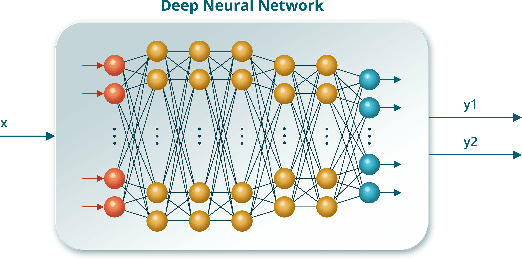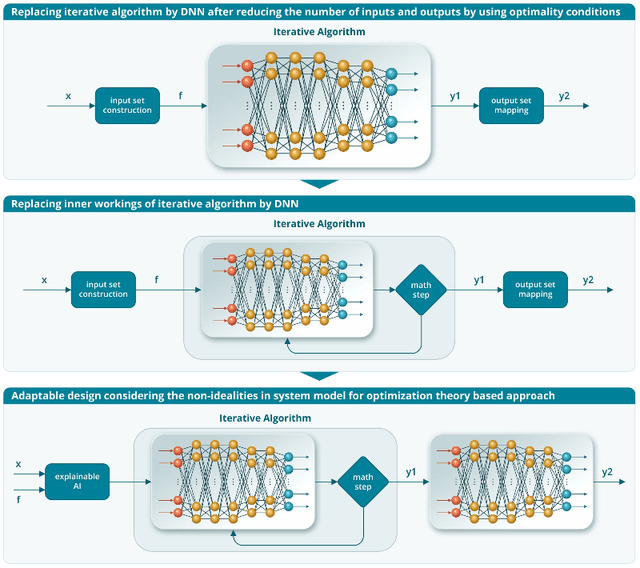Aysun Gurur Onalan
Integrating Optimization Theory with Deep Learning for Wireless Network Design
Dec 11, 2024



Abstract:Traditional wireless network design relies on optimization algorithms derived from domain-specific mathematical models, which are often inefficient and unsuitable for dynamic, real-time applications due to high complexity. Deep learning has emerged as a promising alternative to overcome complexity and adaptability concerns, but it faces challenges such as accuracy issues, delays, and limited interpretability due to its inherent black-box nature. This paper introduces a novel approach that integrates optimization theory with deep learning methodologies to address these issues. The methodology starts by constructing the block diagram of the optimization theory-based solution, identifying key building blocks corresponding to optimality conditions and iterative solutions. Selected building blocks are then replaced with deep neural networks, enhancing the adaptability and interpretability of the system. Extensive simulations show that this hybrid approach not only reduces runtime compared to optimization theory based approaches but also significantly improves accuracy and convergence rates, outperforming pure deep learning models.
Teacher-Student Learning based Low Complexity Relay Selection in Wireless Powered Communications
Feb 03, 2024Abstract:Radio Frequency Energy Harvesting (RF-EH) networks are key enablers of massive Internet-of-things by providing controllable and long-distance energy transfer to energy-limited devices. Relays, helping either energy or information transfer, have been demonstrated to significantly improve the performance of these networks. This paper studies the joint relay selection, scheduling, and power control problem in multiple-source-multiple-relay RF-EH networks under nonlinear EH conditions. We first obtain the optimal solution to the scheduling and power control problem for the given relay selection. Then, the relay selection problem is formulated as a classification problem, for which two convolutional neural network (CNN) based architectures are proposed. While the first architecture employs conventional 2D convolution blocks and benefits from skip connections between layers; the second architecture replaces them with inception blocks, to decrease trainable parameter size without sacrificing accuracy for memory-constrained applications. To decrease the runtime complexity further, teacher-student learning is employed such that the teacher network is larger, and the student is a smaller size CNN-based architecture distilling the teacher's knowledge. A novel dichotomous search-based algorithm is employed to determine the best architecture for the student network. Our simulation results demonstrate that the proposed solutions provide lower complexity than the state-of-art iterative approaches without compromising optimality.
 Add to Chrome
Add to Chrome Add to Firefox
Add to Firefox Add to Edge
Add to Edge